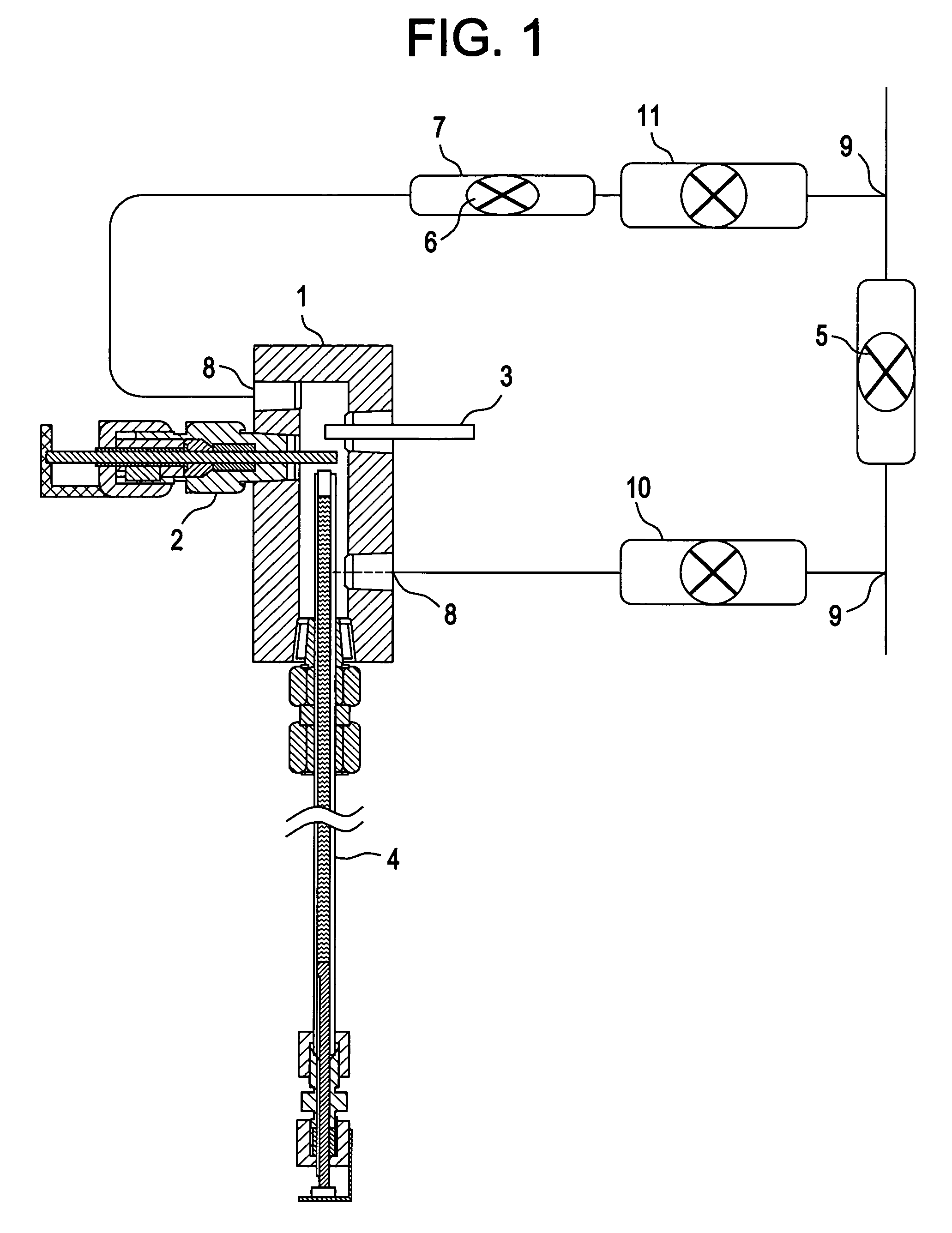Method of inhibiting corrosion in hot water systems
a hot water system and corrosion inhibitor technology, applied in the field of methods, can solve the problems of many corrosion phenomena, dissolved oxygen in water is not always perfect, and the deaerator does not always work perfectly, so as to achieve the effect of lowering the orp number and achieving the effect of higher dissolved oxygen values
- Summary
- Abstract
- Description
- Claims
- Application Information
AI Technical Summary
Benefits of technology
Problems solved by technology
Method used
Image
Examples
example 1
Comparison of High and Low Temperature ORP Probe Responses to Changes in Reductant and Dissolved Oxygen Concentration.
[0116]FIG. 5 shows a series of tests that compares the performance of room temperature (low temperature) ORP probes with the high temperature ORP probe of this invention using the test rig described above. The figure shows two ORP measurements that are made for different dissolved oxygen and erythorbic acid additions. The dissolved oxygen values are plotted on the right hand Y scale. The X axis is time in days. Step changes in the high temperature (110° C.) ORP probe response correspond to when changes are made in the erythorbic acid concentration or dissolved oxygen values. The only changes seen by the low temperature ORP probe correspond to when macro changes are made to the dissolved oxygen values. As can be seen, the low temperature ORP probe does not respond to the changing reductant additions (erythorbic acid in this case).
[0117]FIG. 5 also shows how the high t...
example 2
Effect of Temperature and pH on ORP Measurement.
[0120]It is important to note that the temperature of ORP measurement is critical in determining the ORP value to be achieved. For example, decreasing the temperature from 204° C. to 121° C. in a pH (room temperature) of 9.2 (caustic adjusted) water environment will raise the ORP by several hundred millivolts as measured against the EPBRE (T). This is a direct result of the effect of temperature on the factors in the Nernst Equation. Increasing temperature lowers ORP numbers.
The Nernst Equation states that: E=Eo−(RT / zF)ln([oxid]o / [reductant]r)
[0121]Therefore, the temperature will affect the potential measured (E) directly and proportionately. As the temperature increases, the potential should decrease (become more negative). Temperature not only affects the “T” term in the above equation, but it can also affect the “z” term (number of electrons transferred) and the oxidation and reductant concentrations, and thus the logarithm term abo...
example 3
Effect of Dissolved Oxygen and Oxygen Scavenger Concentration on ORP.
[0124]ORP numbers are expected to increase as the dissolved oxygen values increase. A test series is run in which the dissolved oxygen value is varied up to 300 ppb, at pH=9.2 (caustic additions) in 205° C. water. The ORP response is shown in FIG. 6.
[0125]FIG. 6 shows the dissolved oxygen content on a linear scale. It is informative to see how small amounts of oxygen drastically affect the ORP numbers and how quickly the ORP numbers saturate with even higher dissolved oxygen values.
[0126]Higher temperature probes have a steeper response as compared to room temperature probes that exhibit a “flatter” response to dissolved oxygen. The high temperature ORP probe also exhibits a much larger range of response than room temperature ORP probes.
[0127]Oxygen scavengers used to inhibit corrosion in hot water systems will have varying reducing powers under the particular hot water system conditions resulting in unique reducta...
PUM
| Property | Measurement | Unit |
|---|---|---|
| pH | aaaaa | aaaaa |
| temperature | aaaaa | aaaaa |
| pressure | aaaaa | aaaaa |
Abstract
Description
Claims
Application Information
 Login to View More
Login to View More - R&D
- Intellectual Property
- Life Sciences
- Materials
- Tech Scout
- Unparalleled Data Quality
- Higher Quality Content
- 60% Fewer Hallucinations
Browse by: Latest US Patents, China's latest patents, Technical Efficacy Thesaurus, Application Domain, Technology Topic, Popular Technical Reports.
© 2025 PatSnap. All rights reserved.Legal|Privacy policy|Modern Slavery Act Transparency Statement|Sitemap|About US| Contact US: help@patsnap.com



